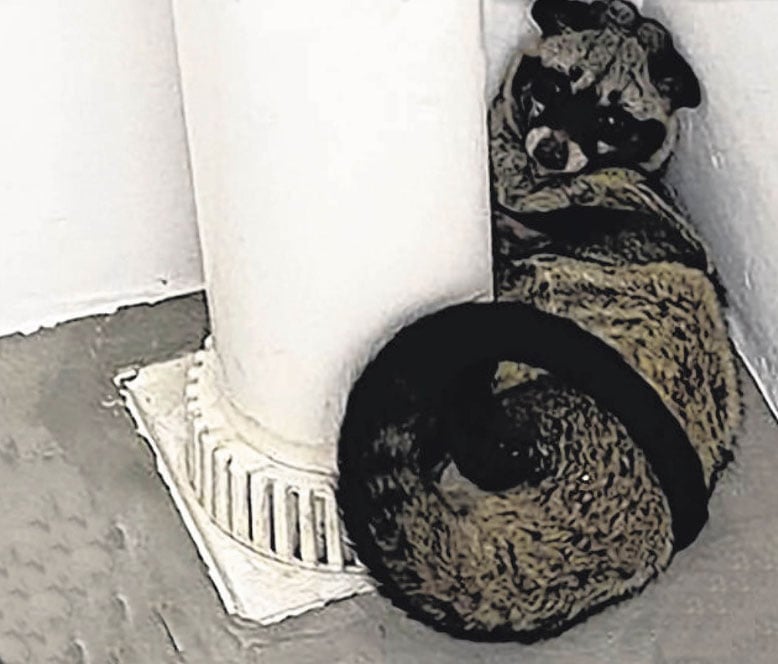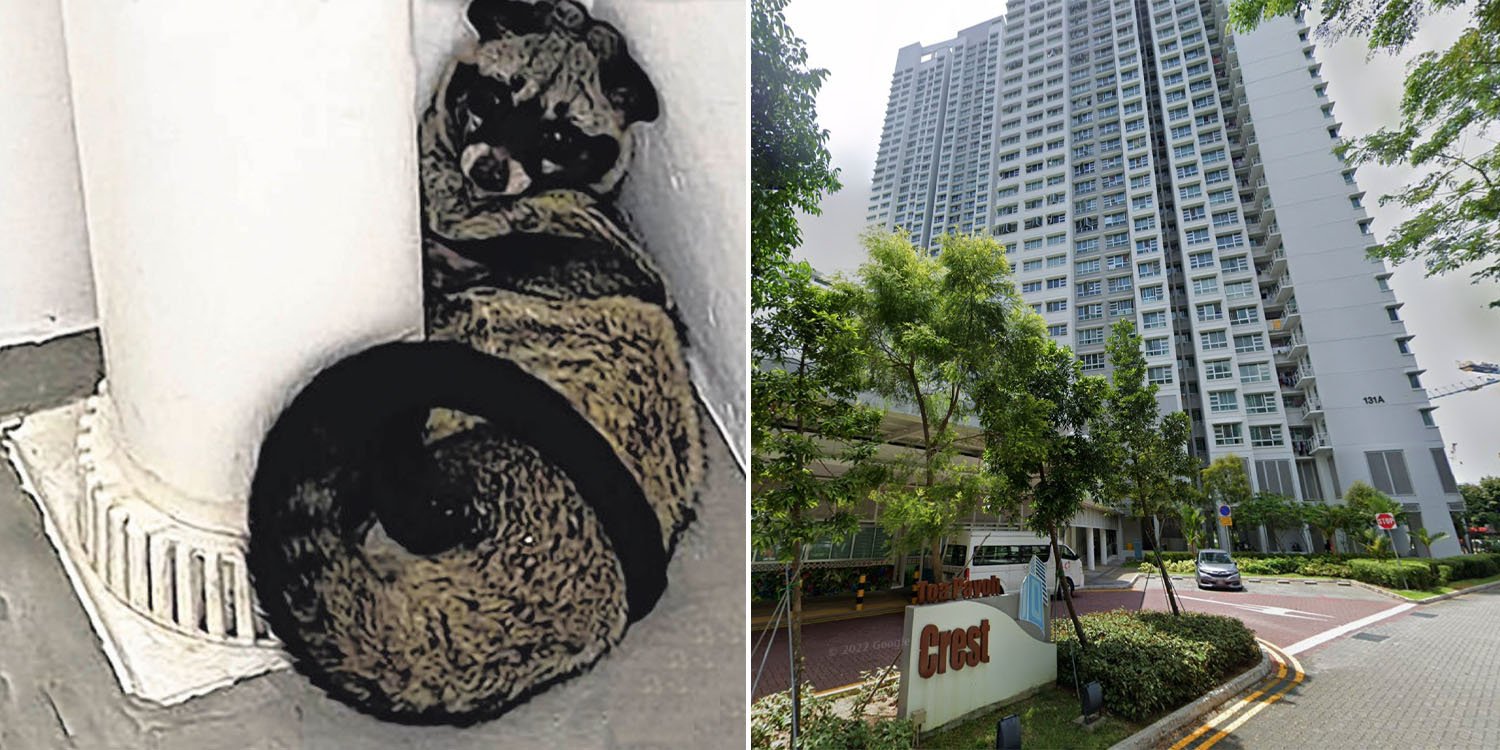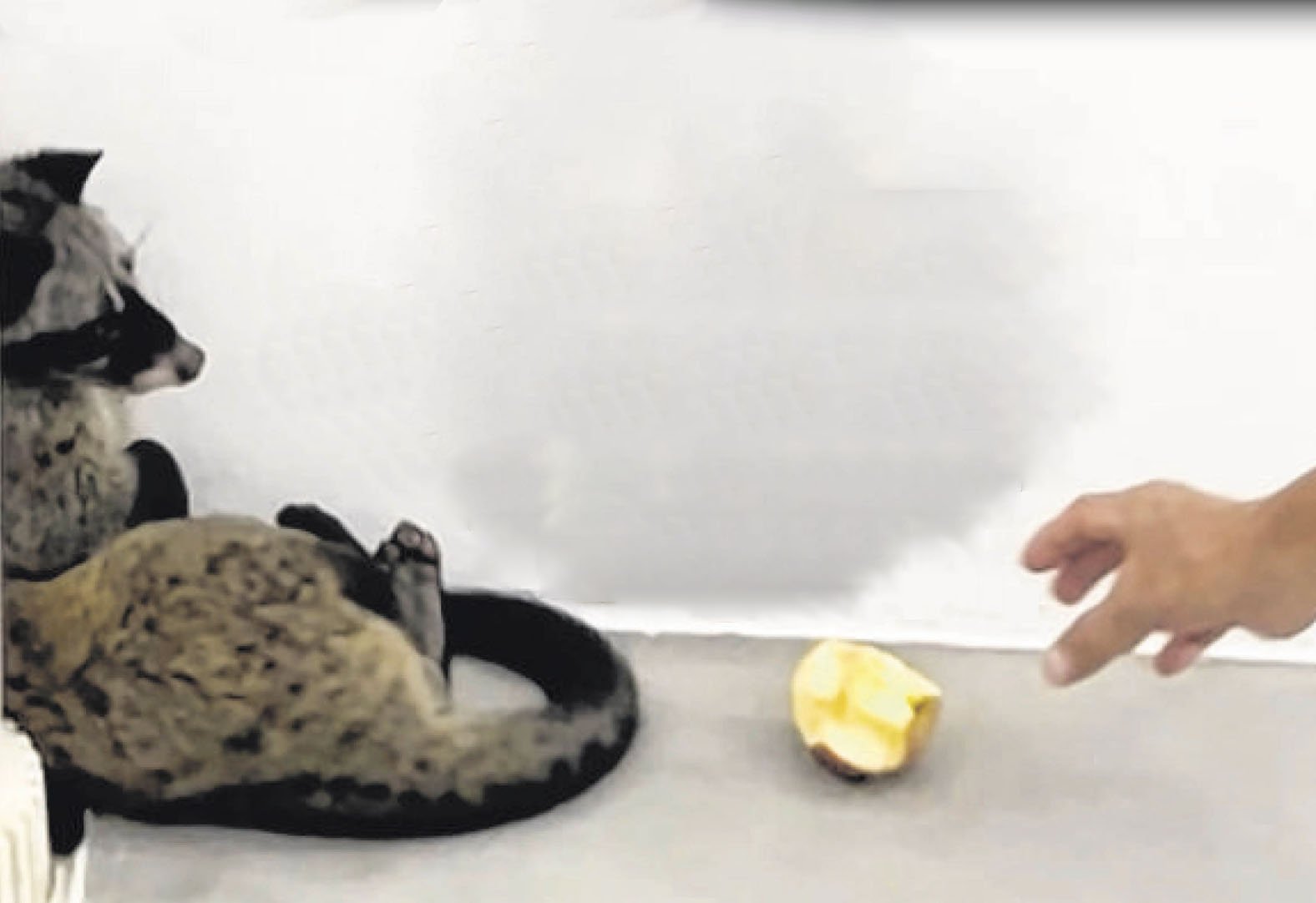Civet Cat Spotted In Toa Payoh Stairwell On 1 Sep
While we often see wildlife around Singapore, some animals are less often seen than others.
On 1 Sep, Mr Gao was walking down the stairs of a Toa Payoh HDB when he chanced upon a strange-looking animal that resembled a racoon.

Source: Google Maps
At that time, his granddaughter mistook it for a cat and approached it but was stopped by Mr Gao.
It was only when they uploaded the picture of the animal online did they realise the creature was in fact a civet cat.
Civet cat at Toa Payoh HDB allegedly bared teeth and let out threatening sound
Speaking to Shin Min Daily News, Mdm Wan (transliterated from Chinese) – another resident of Block 131A Lorong 1 Toa Payoh – had also chanced upon the feline creature. Her husband reportedly gave it an apple, which it devoured speedily.
She guessed that the animal had been in the stairwell for a long time, leaving behind what were apparently traces of its faeces.
Mdm Wan said the civet cat was a curious sighting at the estate, especially since there are no forested areas in the vicinity.
She shared that she has never seen any wildlife in the area and many residents wondered where the civet cat could have come from.

Source: Shin Min Daily News
Civet cat allegedly bared its teeth when one resident approached
According to Shin Min Daily News, when one resident tried to go near the civet cat, it bared its teeth and let out a hissing sound.
Mr Gao said it looked threatening and as if it was about to bite.
Because of that incident, he avoided using the stairwell while he was with his grandkids.
However, he said he isn’t too worried as he felt that the civet cat won’t appear there as much since its hiding spot has been discovered.
ACRES advises public not to approach civet cats
Animal Concerns Research and Education Society (ACRES) confirmed that the animal spotted in Toa Payoh was indeed a common palm civet.
It is a nocturnal creature that consumes fruits, eggs, and insects.
Mr Kalai, a spokesperson for the agency, shared that civet cats have adapted well to living in our city, much like otters and pythons.
Often, they rely on fruit trees in residential areas for survival.
However, they are rarely seen because they are very shy animals.
Kalai also pointed out that the Toa Payoh HDB was only 1.5km from Bukit Brown Cemetery and 1km from MacRitchie Reservoir Park.
He elaborated that ever since the Bidadari area had been cleared for HDBs, there have been more civet cat sightings on the East side of Singapore.
From the images, Kalai said the civet cat’s crouching position could be a defensive mechanism.
He urged the public not to approach or corner wildlife animals, which will make them nervous.
Kalai also advised against feeding these creatures as it will cause them to rely on humans and may lead to them staying in residential areas for long periods.
You can find out more about the dos and don’ts of civet cat encounters on National Parks Board (NParks) website here.
Have news you must share? Get in touch with us via email at news@mustsharenews.com.
Featured image adapted from Shin Min Daily News on Facebook and Google Maps.









